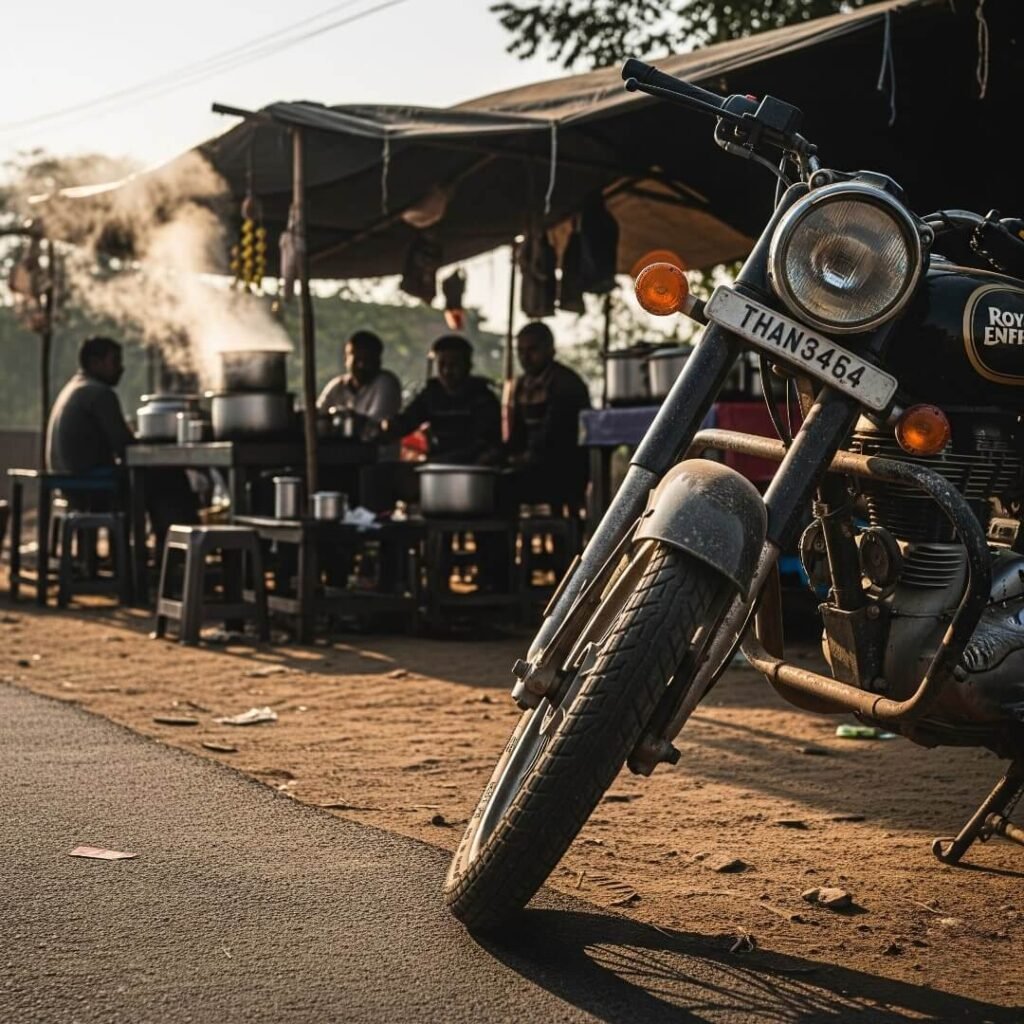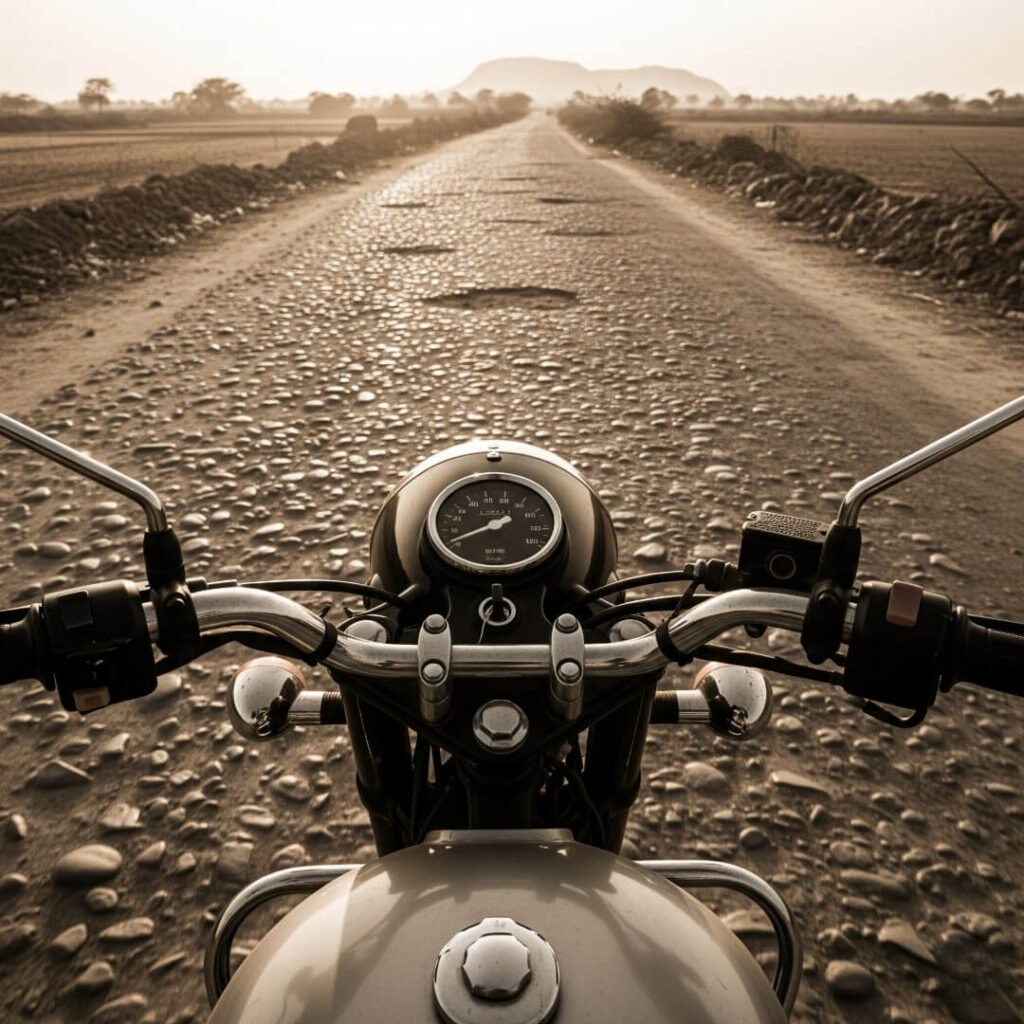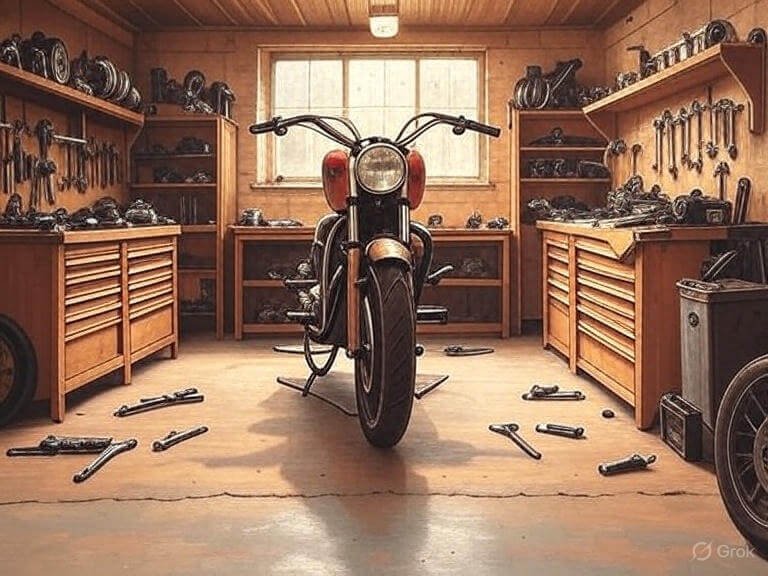Motorcycle suspension settings are my obsession right now, sprawled here in a tiny roadside dhaba in Rajasthan, sipping scalding chai that’s burning my tongue. I’m an American dude, far from home, and let me tell you, riding India’s pothole-riddled roads on a rented Royal Enfield has been a wild, humbling ride. The dust’s sticking to my sweaty forearms, and the smell of frying pakoras is mixing with petrol fumes. I’ve learned—mostly the hard way—that nailing your bike’s suspension isn’t just about comfort; it’s about not rattling your spine into next week. Seriously, my first ride here? I hit a crater disguised as a road and nearly launched myself into a cow’s personal space. Let’s dive into how I figured out motorcycle suspension settings and why they’re the key to a smooth ride.
Why Motorcycle Suspension Settings Matter on Indian Roads
I’m no mechanic, okay? Back home in the States, I’d just cruise my bike on smooth highways, blissfully ignorant of shocks and dampers. But India? It’s like the roads are auditioning for an apocalypse movie. Potholes, gravel, random speed bumps—my first ride from Jaipur to Pushkar had me wincing every mile. Motorcycle suspension settings are what keep your bike from bucking you off like an angry bull. According to CycleWorld, proper suspension tuning absorbs shocks, keeps tires glued to the road, and makes you feel like you’re riding on butter instead of bricks.
Here’s what I learned after eating dust for days:
- Preload: This adjusts how much your suspension compresses under your weight. Too stiff, and you’re bouncing like a pogo stick; too soft, and you’re bottoming out on every bump.
- Compression Damping: Controls how fast the suspension compresses. Crank it up for India’s rough roads, or you’ll feel every pebble in your bones.
- Rebound Damping: This is about how fast the suspension springs back. Get it wrong, and your bike’s wobbling like my confidence after that cow incident.
My Embarrassing First Attempt at Bike Suspension Tuning
Picture this: I’m in a dusty garage in Udaipur, surrounded by curious mechanics who probably think I’m a total rookie (they’re not wrong). I decided to tweak my bike’s suspension settings myself because, like, how hard could it be? Spoiler: I turned the preload knob the wrong way and made my Enfield stiffer than a plank. The next ride felt like I was sitting on a jackhammer. My butt was screaming, and I’m pretty sure the stray dogs were laughing. I had to slink back to the garage, tail between my legs, and beg for help. The mechanic, with this wry grin, fixed it in ten minutes. Lesson learned: read the manual, or at least watch a YouTube tutorial first.

How I Got Better at Suspension Adjustment Tips
After that fiasco, I got serious about bike suspension tuning. I’m sitting here now, outside this dhaba, with my notebook full of scribbled tips from locals and RevZilla articles. The key is starting small and testing. Here’s my go-to process, straight from trial and error:
- Check Preload: I weigh about 180 pounds, plus gear, so I adjust the preload to match. Most bikes have a clicker or ring—turn it to add resistance if you’re heavier.
- Tweak Compression: Indian roads need more compression damping to soak up those sudden dips. I add a few clicks, test-ride, and adjust again.
- Fine-Tune Rebound: Too much rebound, and my bike felt like it was drunk, wobbling after bumps. Too little, and it was sluggish. I aim for a smooth return.
- Test Ride Like Crazy: I ride a short loop, maybe down a bumpy village road, and feel how the bike handles. Adjust, repeat, curse a little.
It’s not perfect. Yesterday, I overdid the compression, and my bike felt like it was fighting me on a gravel patch outside Jodhpur. But each tweak gets me closer to that sweet spot where the bike glides over chaos.

Motorcycle Ride Comfort: What I Wish I Knew Sooner
Here’s the raw truth: I thought suspension settings were just for racers or gearheads. Nope. Motorcycle ride comfort is life-changing, especially when you’re dodging goats and rickshaws on India’s roads. I used to grit my teeth through every jolt, but now? After dialing in my shock absorber setup, I can ride for hours without feeling like I’ve been in a bar fight. My back’s grateful, and I’m not cursing every pothole. One surprise: softer settings don’t always mean comfier. Too soft, and you’re wallowing in turns, which I learned when I nearly skidded into a ditch chasing a “smooth” setup.
Pro tip: talk to local riders. In a market in Agra, this old dude with a glorious mustache gave me better suspension adjustment tips than any website. He said, “Feel the bike, not just ride it.” Sounds cheesy, but it stuck with me.
Common Mistakes in Shock Absorber Setup (I Made Them All)
I’m not proud, but I’ve botched this more times than I can count. Here are my dumbest mistakes with motorcycle suspension settings, so you don’t repeat them:
- Ignoring the Manual: Every bike’s different. My Enfield’s settings aren’t the same as my buddy’s KTM back home. Check your bike’s specs.
- Over-Adjusting: I’d crank the dials like I was tuning a guitar. Small tweaks, people. Small tweaks.
- Skipping Test Rides: I thought I could “feel” the difference in the garage. Nope. You need real roads to know what’s up.

Wrapping Up: My Take on Motorcycle Suspension Settings
Okay, so I’m no expert, sitting here with chai stains on my shirt and a bike that’s finally riding like a dream. Motorcycle suspension settings aren’t just techy nonsense—they’re the difference between loving your ride and dreading every bump. India’s roads taught me that the hard way, from my rookie mistakes to finally getting that buttery-smooth feel. My call-to-action? Grab a wrench, start tweaking, and don’t be afraid to mess up. You’ll feel the difference, I promise. Got a suspension tip or a funny story? Drop it in the comments—I’m all ears.





